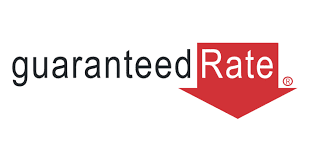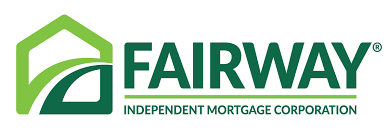Lender LendingTree rating and “best of” category Lender review


Refinance loansRead our review


VA loansRead our review


Jumbo loansRead our review


Online mortgage experienceRead our review


FHA loansRead our review


Home equity loansRead our review


Mortgage loan varietyRead our review
![]() Learn more about how we chose our list of the best mortgage lenders.
Learn more about how we chose our list of the best mortgage lenders.
As with many states, buying a home in Minnesota means abiding by certain laws and regulations. Here’s what you need to know:
Minnesota requires home sellers to fill out a seller disclosure form. Sellers are specifically required to disclose a long list of potential issues about their homes that includes informing buyers about air and noise pollution, cracks, diseased trees, ice damage, mold, soil or settling problems, and sewer backups. They also have to indicate whether certain components of the home, such as plumbing, heating and electrical systems, are (or aren’t) in working order.
Minnesota allows both judicial and non-judicial foreclosures, which means lenders are not required to take homeowners to court in order to foreclose, as they are in some states. However, Minnesota requires a process known as “foreclosure by advertisement.” It basically requires lenders to first notify homeowners that they intend to foreclose, and then forward the delinquent account to a foreclosure attorney, along with a pre-foreclosure notice. The attorney then schedules a “sheriff’s sale,” or public auction to sell the home unless the homeowner pays up.
Minnesota is not a community property state where all assets acquired during the marriage belong equally to both spouses and get divided in half. Instead, it is an “equitable distribution” state, which means property does not have to be divided 50/50. In Minnesota, marital assets get divided in a way that is determined by a judge to be fair and equitable. This typically includes considering factors such as individual incomes, the length of the marriage and whether the couple had children.
Minnesota does not require a lawyer to represent the buyer during the closing process. Instead, state law allows buyers to choose a closing agent, such as a licensed real estate broker or title company, to prepare closing documents, help with title work and guide the buyer through the process. The Minnesota Attorney General’s office recommends buyers shop around to find a qualified closer at the best price.
Minnesota has both a mortgage registry tax (MRT) and a deed tax that factor into home purchases. The MRT is based on the amount of mortgage debt and is paid by buyers when the mortgage gets recorded. The deed tax is based on the value of the real estate being transferred and is usually paid by sellers, although a buyer may have to pay it to expedite recording of the deed.
The MRT is 0.23% of the debt, and the deed tax is 0.33% of the price paid for the home. This means a couple buying a $150,000 home with a $20,000 down payment would owe an MRT of $299 and possibly a deed tax of $495. Don’t worry about calculating these numbers on your own. Mortgage lenders are responsible for properly disclosing the exact amount of transfer taxes you might owe with a home purchase.
In Minnesota, property taxes vary by county, and they range from $641 in Koochiching County, a sparsely populated county that sits near the Canadian border, to $2,992 in Carver County, a fast-growing suburban area located just southwest of the Twin Cities. The median property tax in Minnesota is $2,098 per year.
For homeowners looking to pay less property tax, Minnesota does offer a property tax exclusion that reduces the market value of a home subject to property taxes. However, the exclusion is available only to qualifying disabled veterans and their primary caregivers or surviving spouses. The state also offers a property tax deferral to seniors who can’t pay their property taxes and have household incomes of $60,000 or less.
The conforming loan limit in Minnesota in 2019 is $484,350 for a single-family home in every county in the state. Conforming loans adhere to guidelines set by Fannie Mae and Freddie Mac, and conforming loan limits represent the maximum amounts these two government-sponsored enterprises are willing to insure on conventional mortgages, the most popular type of mortgage with consumers. For homebuyers who have good credit, conforming loans generally offer the best interest rates.

Minnesota offers a variety of programs designed to make homebuying both more accessible and affordable.
The Start Up program helps first-time homebuyers by offering more affordable, fixed-rate mortgages, as well as loans up to $15,000 for down payment and closing costs. The program requires buyers to put as little as 3% down on their mortgage and are aimed at helping buyers pay either little or no mortgage insurance.
To qualify for the Start Up program, you must:
The Step Up program provides assistance to repeat homebuyers or homeowners who wish to refinance their mortgage. The program offers many of the same benefits as Start Up, including down payment and closing cost loans up to $15,000, down payments as little as 3%, low or no mortgage insurance and fixed-rate loans.
To qualify for the Step Up program, you must:
These Minnesota programs offer down payment and closing cost assistance to homebuyers or homeowners who are participating in the Start Up or Step Up programs and meet certain income requirements.
The Monthly Payment Loan program offers a loan up to $15,000 that has an interest rate equal to that of your mortgage and gets repaid with equal monthly payments over 10 years.
The Deferred Payment Loan offers no-interest loans up to $8,000 (or $10,000 for Deferred Payment Plus, which is open to qualifying borrowers). You repay the loan when you move, sell, refinance or pay off your mortgage.